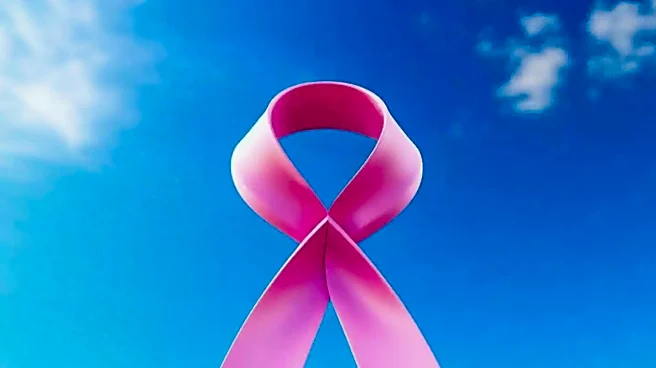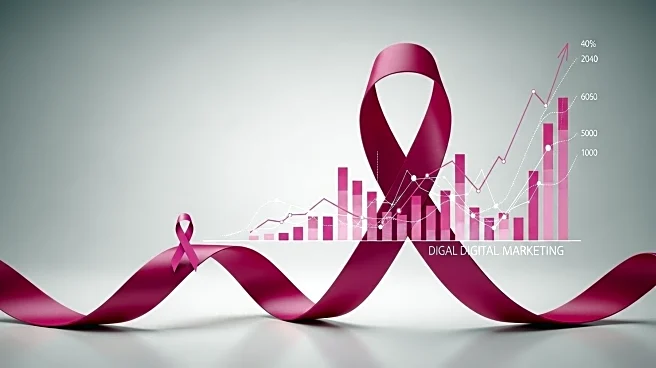What's Happening?
The article discusses the importance of understanding what a breast lump feels like, as highlighted by Clea Shearer's experience with breast cancer. Experts emphasize the need for awareness of normal breast texture to identify abnormalities. Dr. Arif Kamal from the American Cancer Society describes a typical lump as a round, hard area that is not easily movable. Dr. Alyssa Cubbison from Ohio State University notes that cancerous lumps are often firm and dense. The article also provides guidance on how to check for lumps, suggesting that familiarity with one's own breast texture is crucial for early detection.
Why It's Important?
Breast cancer is a significant health concern, affecting one in eight women in the U.S. Early detection of breast lumps can lead to timely medical intervention, potentially improving outcomes. The article underscores the importance of self-awareness in breast health, as many women discover changes incidentally. This awareness can lead to earlier diagnosis and treatment, which is critical in managing breast cancer. The information provided empowers individuals to take proactive steps in monitoring their health, potentially reducing the impact of breast cancer on society.
What's Next?
The article suggests that individuals should incorporate regular self-checks into their routine, using everyday activities as opportunities to familiarize themselves with their breast texture. It also advises scheduling regular medical appointments and screenings, especially for those with a family history of breast cancer. Discussions with healthcare providers about appropriate tests and screening schedules are recommended to ensure early detection and management of potential issues.
Beyond the Headlines
The article touches on the broader implications of breast health awareness, including the psychological impact of self-exams and the importance of reducing stigma around breast cancer. It highlights the need for continued education and support for individuals in understanding and managing their breast health. The cultural shift towards proactive health monitoring can lead to better health outcomes and reduced healthcare costs in the long term.










